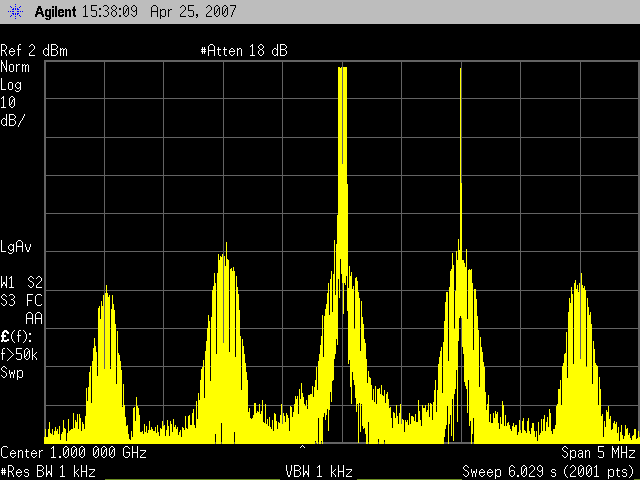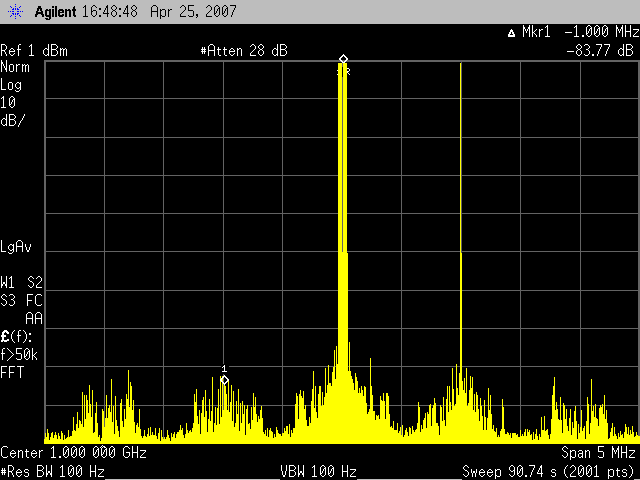
A good time to use multiple suppression bands is for signals with unequally spaced tones. The correction measurement can be made much more efficient by anticipating where the distortion products will be instead of just correcting across a single large band.
In this example, there are 8 equally spaced tones about the carrier. The tone spacing is 10 kHz. There is one additional tone at 1 MHz offset from the carrier. Notice there are 5 suppression bands. The first suppression band (-1.25 MHz to -0.75 MHz) anticipates the image signal from the tone at 1 MHz offset from the carrier. The second suppression band (-160 kHz to 160 kHz) anticipates IMD from the 8 equally spaced tones about the carrier. The third suppression band (0.75 MHz to 1.25 MHz) anticipates IMD mixing around the 1 MHz tone. The final 2 suppression bands are based on the third order mixing products of the 8 tones about the carrier and the tone at 1 MHz offset.
Here is the signal before correction. Note the high-level distortion products at all of the anticipated places. Also note that between the anticipated bands that the distortion is very minor and does not need to be corrected. Shown is the spectral view and the N7621B correction panel.



